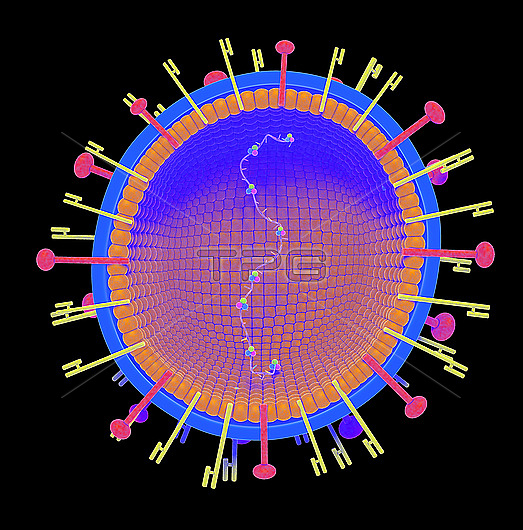
Henipavirus particle structure, illustration. At the core of the virus is a single-stranded RNA (ribonucleic acid) genome (purple strand). Bound to the RNA are nucleocapsid proteins (green) and associated with it are large (L, blue) and phosphoroprotein (P, pink) proteins. The L and P proteins play a role in the replication of the viral genome. Surrounding the core is a layer of matrix proteins (orange) and a lipid envelope (blue). Embedded with the envelope are fusion (F, yellow) and attachment (G, pink) proteins. To infect a cell the G proteins attach to host cell surface receptors and the F proteins fuse with the host cell membrane. Henipaviruses are zoonotic (transmitted to humans via animals) pathogens found in several small mammals, including bats and shrews. Henipaviruses include Nipah virus and Hendra virus, which cause potentially fatal respiratory and neurological diseases, and Langya henipavirus, which causes fever, fatigue, and coughing.
| px | px | dpi | = | cm | x | cm | = | MB |
Details
Creative#:
TOP28038329
Source:
達志影像
Authorization Type:
RM
Release Information:
須由TPG 完整授權
Model Release:
N/A
Property Release:
N/A
Right to Privacy:
No
Same folder images:

 Loading
Loading